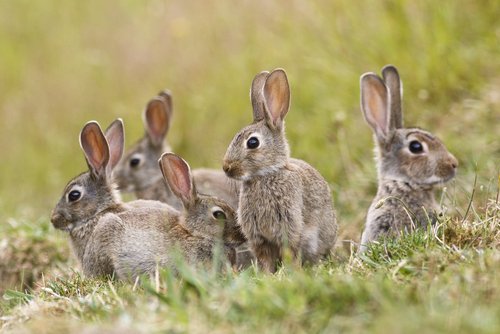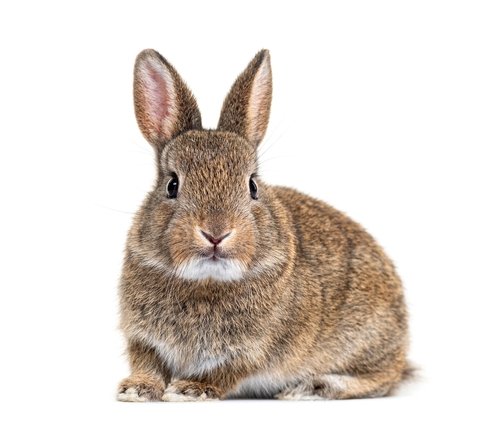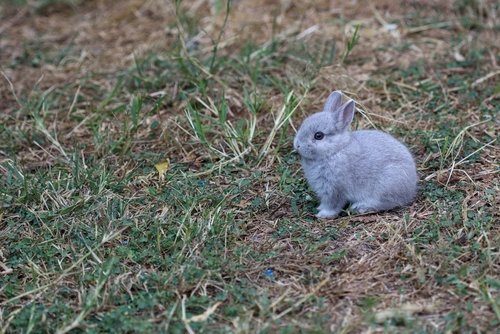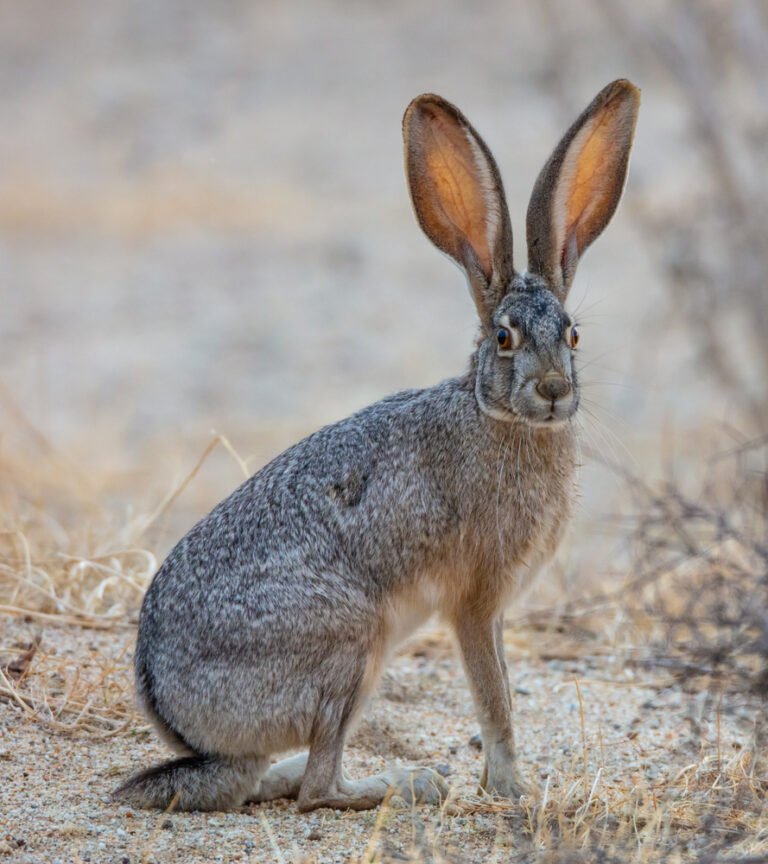Texas Rabbit Hunting Regulations: Everything You Need to Know
Rabbit hunting in Texas, an age-old pastime that combines the thrill of the hunt with a deep appreciation for nature’s bounties, has firmly rooted itself as a cherished outdoor activity.
From seasoned hunters seeking to test their skills to families bonding over shared experiences, this pursuit has captivated the hearts and minds of many. With its rich history and enduring popularity, rabbit hunting stands as a testament to humanity’s connection with the wilderness and our innate desire to engage in primal pursuits.
Preserving Wildlife and Ensuring Safety
While rabbit hunting may seem like an unfettered adventure, it is crucial for every aspiring hunter to grasp the significance of regulations and ethics associated with this endeavor. Regulations serve as guideposts that protect wildlife populations from excessive exploitation and promote sustainable practices. By adhering to these regulations, hunters actively contribute to conservation efforts while ensuring that future generations can enjoy the splendor of these magnificent creatures.
Moreover, understanding ethical considerations fosters a sense of sportsmanship by encouraging responsible behavior towards both the natural environment and fellow hunters. In Texas, where rabbit hunting is particularly prevalent due to its diverse landscapes and abundant populations, familiarizing oneself with local regulations is paramount before embarking on this enthralling quest.
The state’s authorities have established specific rules regarding seasons, bag limits, licensing requirements, possession limits, and hunting methods. Adherence to these guidelines not only ensures compliance with legal obligations but also provides an opportunity for thoughtful engagement with nature’s delicate balance.
As we delve further into this article about rabbit hunting in Texas—a realm where tradition meets conservation—it behooves us to explore not only how best to pursue these fleet-footed creatures but also how we can embrace our roles as guardians of nature’s wonders. Through a comprehensive understanding of regulations and ethical considerations, we can revel in the joy of the hunt while preserving the timeless magic that lies within the Texan wilderness.
Rabbit Species in Texas
Eastern Cottontail
The Eastern Cottontail is one of the most prevalent and iconic rabbit species found in Texas. Recognizable by its short, cotton-like tail and reddish-brown fur, this species is known for its adaptability to different habitats. Eastern Cottontails can be found across a wide range of landscapes in Texas, including grasslands, brushy areas, and agricultural fields.
They are primarily herbivorous creatures, feeding on a variety of vegetation such as grasses, clover, and cultivated crops. These rabbits are known for their elusive behavior and remarkable agility.
When threatened or pursued by predators or hunters alike, they rely on their exceptional speed and quick reflexes to evade capture. Eastern Cottontails are typically solitary animals but can be found in small groups during mating season.
Desert Cottontail
The Desert Cottontail, another prominent rabbit species in Texas, inhabits arid regions such as the Chihuahuan Desert. With its sandy-colored fur blending with the desert surroundings for camouflage purposes, the Desert Cottontail has adapted remarkably well to survive in these harsh environments.
This resilient species primarily feeds on desert plants like cacti pads and various shrubs that can provide sufficient moisture intake alongside their diet. Their ability to minimize water loss through efficient digestion makes them well-suited for arid conditions.
Desert Cottontails tend to be more active during dawn and dusk when temperatures are cooler. They exhibit a cautious nature when faced with potential threats but can become quite agile when needed to escape danger swiftly.
Swamp Rabbit
As the name suggests, the Swamp Rabbit thrives in wetland habitats characterized by marshes, swamps, and riverbanks. Endowed with a slightly larger size compared to other rabbit species, Swamp Rabbits possess long hind legs for enhanced mobility in waterlogged areas.
The diet of swamp rabbits predominantly consists of aquatic plants like sedges and rushes, which are abundant in their preferred habitats. Their fondness for watery territories is further emphasized by their ability to swim across streams and small bodies of water.
Swamp rabbits are known for their territorial behavior. They establish their own exclusive ranges along waterways and are more social compared to other rabbit species.
These rabbits also construct complex nesting structures called forms, which provide shelter and protection for them during resting periods. Understanding the distinct characteristics, preferred habitats, and behavioral patterns of these common rabbit species found in Texas is crucial for successful rabbit hunting while ensuring conservation efforts remain paramount.

Hunting Seasons and Regulations
Rabbit hunting in Texas is a cherished tradition that offers outdoor enthusiasts an opportunity to connect with nature while honing their skills. To ensure the conservation of rabbit populations and maintain sustainable hunting practices, Texas imposes specific hunting seasons for rabbits.
These seasons are carefully planned to coincide with the natural life cycles of rabbits, taking into consideration factors like breeding patterns and environmental conditions.
Exploration of Specific Hunting Seasons
Rabbit hunting seasons in Texas typically span from early fall to late winter when rabbit populations are abundant. The precise dates for each season may vary slightly from year to year. Hence, hunters must consult the Texas Parks and Wildlife Department (TPWD) website or contact local wildlife authorities for up-to-date information. During these designated seasons, hunters can venture into the wild with peace of mind, knowing they are complying with legal requirements and acting as responsible stewards of nature.
Licensing Requirements and Necessary Permits
Before embarking on a thrilling rabbit hunting adventure in Texas, it is imperative to understand the licensing requirements imposed by TPWD. Hunters aged 17 years or older must possess a valid Texas Hunting License, available for purchase online or at various authorized vendors throughout the state.
Additionally, hunters born after September 1st, 1971, must complete hunter education certification before obtaining a license. In specific cases where public lands are involved or if hunters desire additional privileges such as night hunting or using dogs for tracking games, additional permits may be required.
For instance, if one wishes to hunt on public lands managed by TPWD’s Wildlife Management Areas (WMAs), an Annual Public Hunting (APH) Permit might be necessary. These permits grant access to designated areas while ensuring responsible usage that preserves natural habitats and encourages sustainable wildlife populations.
Bag Limits and Possession Limits
Bag and possession limits are crucial for rabbit hunting regulations that promote sustainable practices and prevent overharvesting. In Texas, the bag limit for rabbits is generous, allowing hunters to take up to 10 rabbits per day. However, it is essential to understand and adhere to the possession limit, which caps the number of rabbits a hunter can have at any given time.
Currently, the possession limit for rabbits in Texas is three times the daily bag limit or 30 rabbits, whichever is greater. By implementing these limits, TPWD ensures that rabbit populations have ample opportunity for growth and sustenance, allowing future generations of hunters to experience the thrill of rabbit hunting while preserving the delicate balance of ecosystems across Texas.
Hunting Equipment and Techniques
Gear for Rabbit Hunting
When preparing for a rabbit hunting expedition in the vast landscapes of Texas, it is crucial to have the right equipment at your disposal. The choice of firearms primarily depends on personal preference and the specific circumstances of the hunt.
Shotguns are a popular option, offering versatility and effectiveness in close-range encounters. Alternatively, one may opt for .22 caliber or air rifles, which provide accuracy and precision over longer distances.
The selection of ammunition is also imperative; it is essential to consider factors such as shot size and velocity based on personal preference and habitat conditions. Moreover, appropriate clothing should not be overlooked – outfitting oneself with camouflage enhances concealment and aids in blending seamlessly into the natural surroundings while protecting against inclement weather.
Various Techniques Employed During Rabbit Hunting
Mastering different hunting techniques can significantly enhance your chances of success when pursuing rabbits in Texas’s diverse landscapes. One widely employed method is stalking, which involves moving slowly and silently through suitable habitats, keenly observing for any signs of movement or ear-twitching that might betray the presence of a rabbit before they flee into cover. Another effective approach is utilizing trained dogs like Beagles or other scent hounds specifically bred for tracking rabbits’ scent.
These four-legged companions can efficiently locate hidden rabbits by following their scent trails, maximizing efficiency during hunts spanning larger areas or dense cover. Additionally, calling serves as another valuable technique when hunting rabbits in Texas.
By using predator calls or distress calls designed to imitate the vocalizations that attract rabbits’ attention when they feel threatened or lured by potential mates, hunters can entice these elusive creatures into the open within range for a clean shot. By incorporating these various techniques into your rabbit hunting repertoire while equipped with appropriate gear, you can maximize your chances of a successful and fulfilling hunting experience in the vast and diverse landscapes of Texas.
Rabbit Habitats in Texas
Texas boasts a wide array of habitats that provide ideal living conditions for rabbits. These habitats include grasslands and prairies, woodlands and forests, and riparian areas.
Grasslands and Prairies
Rabbits thrive in the open expanses of grasslands and prairies found throughout Texas. These areas provide ample cover for rabbits to hide from predators while offering a bountiful supply of their preferred food sources, such as grasses, herbs, and other low-lying vegetation. The vastness of these regions allows rabbits to find suitable burrows or thickets to shelter themselves from harsh weather conditions.
Woodlands and Forests
Within the woodlands and forests of Texas, rabbits find refuge amidst the dense vegetation and shrubbery. They make use of the undergrowth for protection against predators like coyotes or bobcats while feasting on various woodland plants like twigs, buds, leaves, berries, and even tree bark during leaner times. The mix of trees provides sheltered spots where rabbits can establish their burrows near reliable food sources.
Riparian Areas
Riparian zones along riversides are also attractive habitats for rabbits due to abundant water sources nearby. These areas offer a combination of grassy patches for grazing purposes along with shrubby thickets that provide cover from predators lurking nearby. The ecological diversity within riparian areas makes them highly favorable environments for supporting healthy rabbit populations.
Conclusion
Texas offers an incredible range of diverse habitats that cater to the flourishing rabbit populations across the state. From vast grasslands to lush woodlands and inviting riparian zones, each habitat provides unique opportunities for rabbit hunting enthusiasts to explore.
By understanding the different habitats and adapting hunting strategies accordingly, individuals can embark on rewarding excursions while respecting the beauty and balance of nature. Rabbit hunting in Texas not only provides exciting outdoor experiences but also encourages a deep appreciation for the rich ecological tapestry that supports these magnificent creatures.






